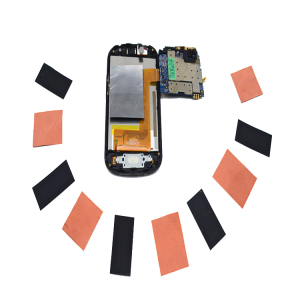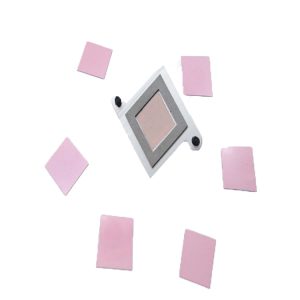Which thermal conductive materials and heat sink components should be used for 5G mobile phone cooling?
xinstJan 14, 2021
The heat dissipation problem has always been a difficult point of great concern for the consumer electronics industry. With the advent of the smart era, the demand for mobile phones is getting higher and higher, and the hardware configuration of mobile phones is also improved. The performance of mobile phone processors is improving every year, which is inevitable to bring about heating problems.
In 5G mobile phones, more antennas need to be added to receive signals, and the high-speed network data transmission also increases the heat of the mobile phone. Nowadays, the mainstream material used in mobile phones is glass. Compared with metal materials, the heat dissipation speed is significantly slower. In addition, the internal components of mobile phones are becoming more and more compact, which puts forward higher requirements on the heat dissipation capacity of mobile phones.

Heat dissipation technology has become one of the key points affecting the performance of mobile phones. Excessive temperature of components will affect the performance and reliability of electronic products. Thermally conductive materials and devices are used to solve the thermal management problems of electronic equipment.
Mobile phone cooling technology can be divided into the following types:
1. Liquid cooling heat dissipation:
Mobile phone liquid cooling mainly uses heat pipes, which are essentially hollow closed pipes containing liquid. The liquid evaporates and absorbs heat in the evaporation section of the pipeline, and becomes a gas that condenses into liquid in the condensation section of the pipeline to release heat. The advantages of liquid cooling heat dissipation are long service life and flexible setting. Liquid cooling heat dissipation can be placed in any position inside the mobile phone where heat dissipation is required. At the same time, because the technology is relatively mature, the cost is relatively small.
2. Graphene heat dissipation:
This is a common heat dissipation method at present, which belongs to the form of heat dissipation inside the mobile phone and relies on the high thermal conductivity of graphene. Graphene material has high temperature resistance, good thermal conductivity, chemical stability, etc., and is currently a cost-effective mobile phone heat dissipation material. The characteristics of graphene give it a natural heat dissipation capacity. Its heat dissipation coefficient is 2 to 5 times that of copper, but its density is only 1/10 to 1/4 that of copper. It is lighter in weight. At the same time, graphene is easy to process. Need to customize the shape and size, good plasticity and other advantages.

3. VC soaking plate:
VC soaking plate heat dissipation, also known as vacuum cavity soaking plate heat dissipation technology, is a vacuum chamber with a fine structure on the inner wall, usually made of copper. When the heat is transferred from the heat source to the VC cavity, the coolant in the cavity begins to vaporize after being heated. The liquid vaporizes and absorbs heat. The condensed coolant will return to the evaporation heat source through the capillary channel of the microstructure. , This process can be repeated continuously. The soaking plate will have different designs according to the size of different components. The production process is relatively complicated and the production cost is high. It is often used in flagship mobile phones that require volume control and rapid heat dissipation.
4. High thermal conductive materials:
Choose a thermal interface material with high thermal conductivity, which is mainly used to fill the micro-voids and uneven surface cavities generated when the two materials are joined or contacted, to establish an effective heat conduction channel between the electronic component and the heat sink, and greatly reduce the heat transfer contact Thermal resistance improves the heat dissipation performance of the device. Such as thermally conductive graphite sheet, thermally conductive silicone sheet, and thermally conductive phase change material.


